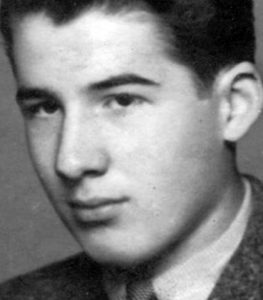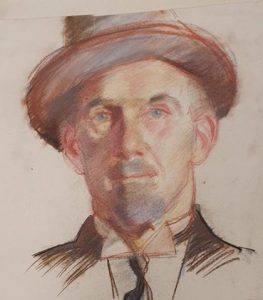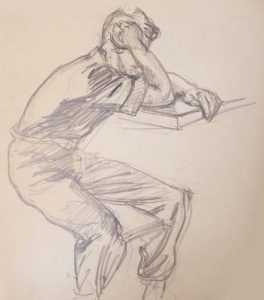Wartime sketches reveal lives of reluctant migrants
A new exhibition of wartime sketches at the Tatura Museum gives a fascinating glimpse into the life of one of the Dunera internees – a group of mostly Jewish detainees shipped from England as enemy aliens in 1940.
Paul Mezulianik produced the sketches during his time as an internee in camps at Hay and Tatura and they reveal some of the feelings of loss and dislocation felt by people forcibly transported far from their families and homes.
 Paul was born in Vienna in November 1921. His father Rudolf, who had been raised as a Catholic, had left the church in 1917 to marry Gisela, who was Jewish.
Paul was born in Vienna in November 1921. His father Rudolf, who had been raised as a Catholic, had left the church in 1917 to marry Gisela, who was Jewish.
Until the late 1930s the couple were part of Vienna’s Jewish community. When Hitler came to power they left the community amid fears of anti-Semitic violence.
Paul was raised in the Jewish faith but was baptised a Catholic in November 1938.
As the persecution of Jews across occupied Europe increased, Paul applied for a visa at the American embassy in Vienna, but he was denied passage to the US.
Eventually, The Quakers arranged for him to travel to Britain in May 1939, with his residency guaranteed by a British man married to one of Paul’s Austrian friends.
While his parents remained in their flat in Vienna — where they would survive the war — he began work on a farm in Yorkshire.
In May, 1940, Paul was one of the thousands of Germans and Austrians rounded up. Worried about the threat of Nazi agents among those who had escaped the Nazis, the British Government arrested those ‘enemy aliens’.
 Aboard the transport ship Dunera, Paul departed Liverpool for Australia in early 1940. He was held at Hay, in New South Wales, from September 1940 until May 1941.
Aboard the transport ship Dunera, Paul departed Liverpool for Australia in early 1940. He was held at Hay, in New South Wales, from September 1940 until May 1941.
Then, he was part of the mass movement of Dunera internees to Tatura, in Victoria, where he remained until July of the next year. His return to Britain having been approved, he boarded the TSS Themistocles in Melbourne on 18 July 1942.
It was while he was at Hay and Tatura that Paul produced many of the remarkable sketches that made up his personal art collection.
Aeone Shrimpton, his stepdaughter, found a trunk in the attic of the Berkshire house Paul had shared with second wife Esilda.
For decades Paul had hidden his artworks. They are almost all figure drawings, studies of human emotions and form, and charting his development as a fine artist.
 After the war Paul went on to have a distinguished career as an animator and film artists with his credits including working on the 1954 classic version of George Orwell’s Animal Farm.
After the war Paul went on to have a distinguished career as an animator and film artists with his credits including working on the 1954 classic version of George Orwell’s Animal Farm.
Aeone presented the sketches to Monash University Professor Seumas Spark – part of a team researching and telling the stories of the Dunera internees. Prof Spark contacted the Tatura Museum to see if it would be interested in showing them.
Museum president Sue Schmitke said the museum jumped at the opportunity to exhibit the sketches.
The exhibition, titled ‘Become What You Are!’ opened at the held at Tatura Irrigation and Wartime Camps Museum on April 18. It runs for three months.
Read more here: Become what you are! | Inside Story












